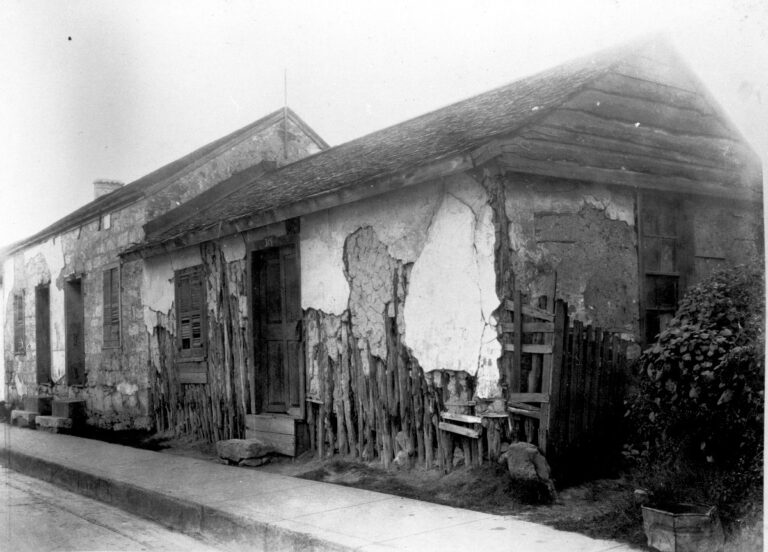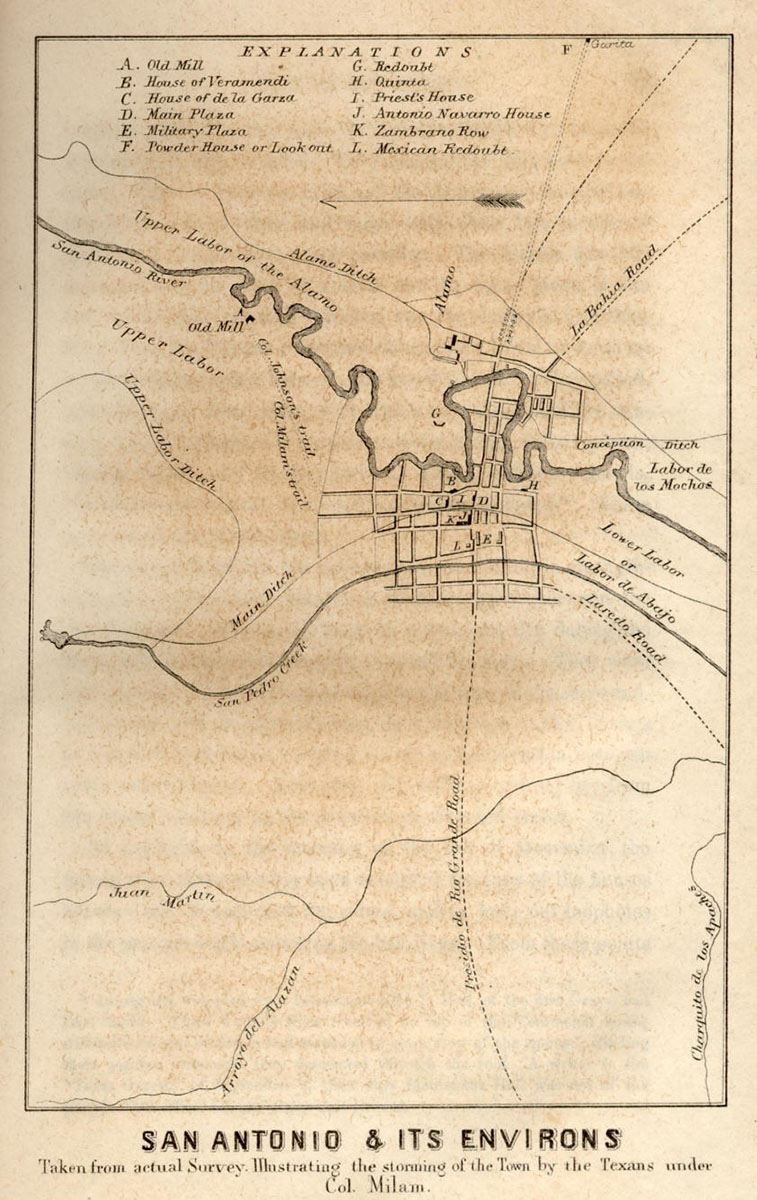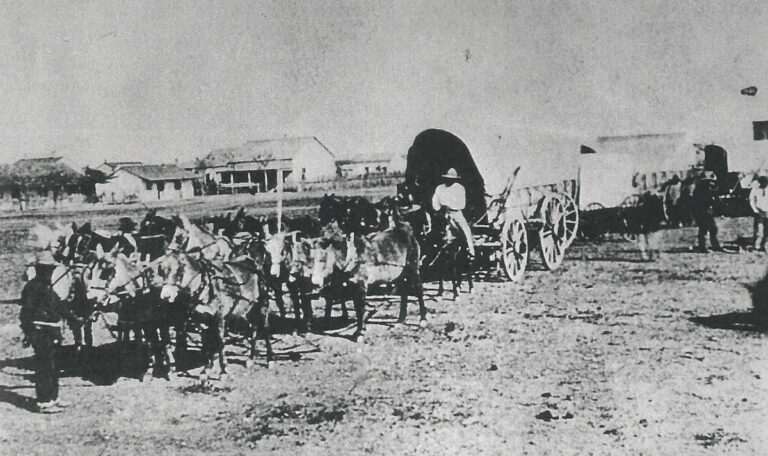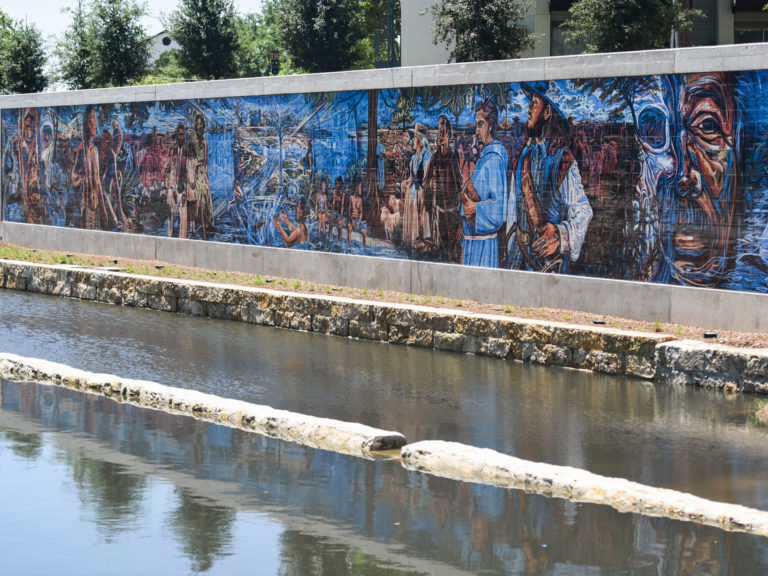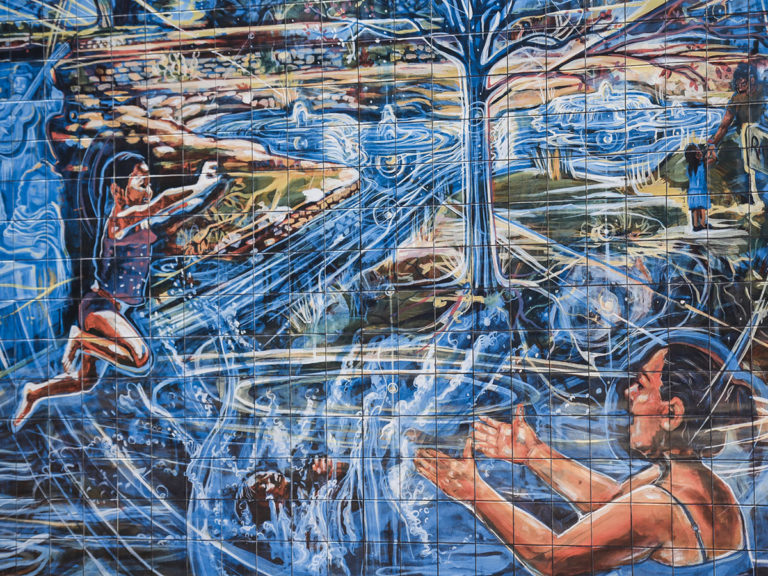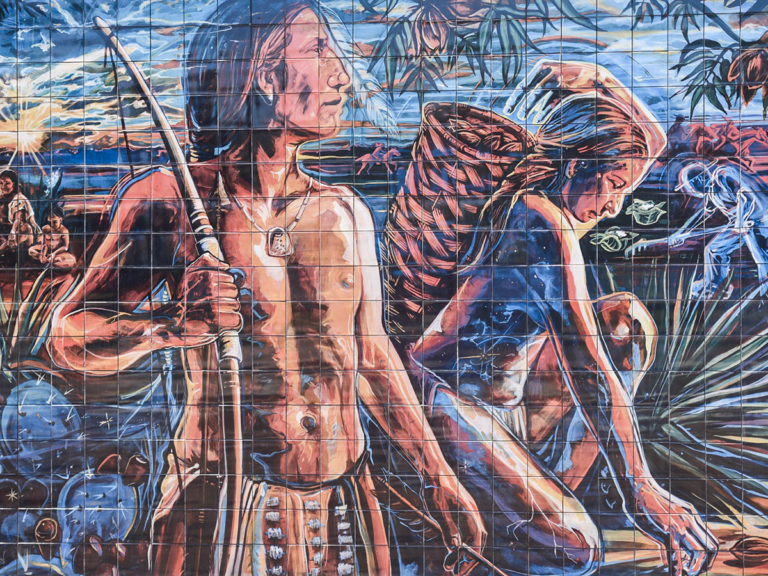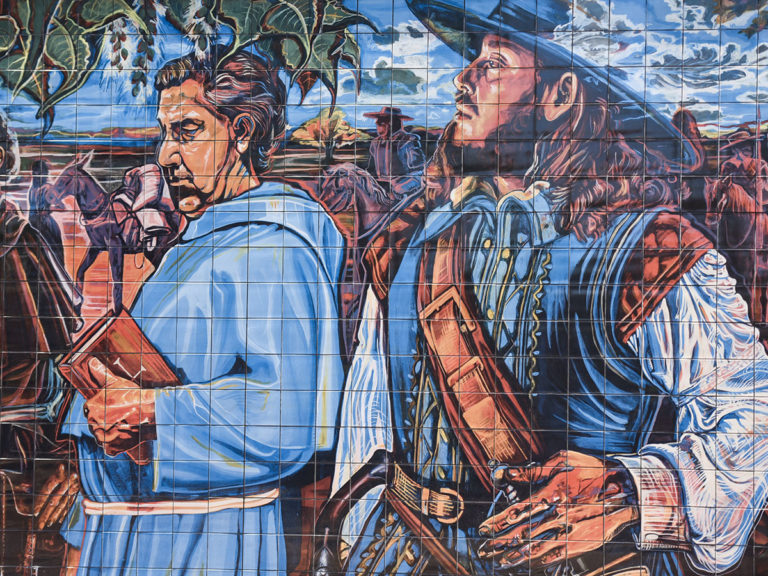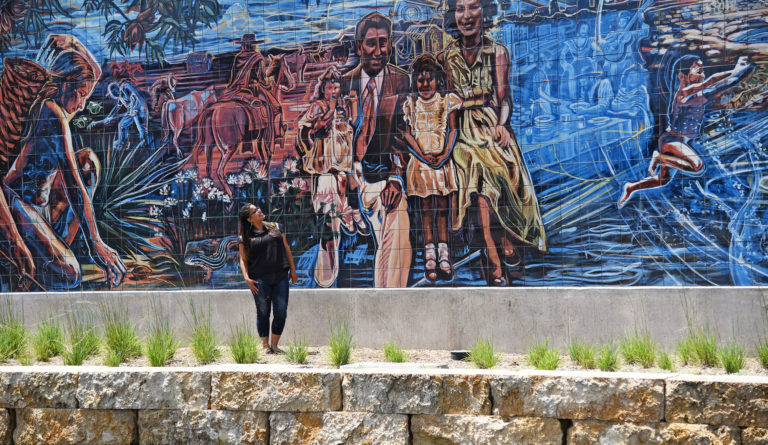Laredito and the Tale of Two San Antonios
English
Español
-
The mural takes you through time as your eyes move towards the center, culminating in the modern-day creek, where the water springs and children swim in harmony.
Medium: Digital image transfer on ceramic tile
Dimensions: 11’H x 117’W
Locations: Between Santa Rosa Avenue and Martin StreetAbout the Artist: Born and raised on the West Side of San Antonio, Garcia is a graduate of Carnegie Mellon School of Art (Bachelors of Fine Art). She frequently works with community youth and has completed murals with the South West Workers Union, Bihl Haus Arts, and San Anto Cultural Arts Center. She has been a workshop leader and teacher at Sanford-Brown University, Say Si, Trinity University, Artpace, and Museo Alameda, among others. In addition, Garcia has been a speaker at the National Association for Chicana and Chicano Studios (2013) in San Antonio.
Website: adrianamjgarcia.com
Americans for the Arts 2019 Public Art Network (PAN) Year in Review Award
Featuring representations of generations and neighborhoods throughout San Antonio, this mural tells the story of how San Pedro Springs brought forth life, growth, and diversity to our community. The left (the West) and the right (the East) sides of the mural come together, literally and figuratively, at its center. On the outer edges, the jaguar and the anhinga represent the origin story of the springs while the mother and father represent the passing down of cultural heritage through storytelling.
Audio Tour
With the native Payaya peoples depicted on the left and the Spanish settlers on the right, the center of the mural titled “De Todos Caminos Somos Todos Uno” or “From All Roads, We Are All One” by San Antonio artist Adriana Garcia, portrays the story of how diverse peoples came together to form the San Antonio we know today. The mural takes you through time as your eyes move toward the center, culminating in the modern-day creek, where the water springs and children swim in nearby San Pedro Springs. The mural reflects the passing down of stories and legacies from generation to generation, from the varying points of view of the natives and of the settlers. The Payaya natives belonged to the Coahuiltecan Nation and called the creek home before any Europeans had arrived. The settlers depicted include Governor Don Martín de Alarcón, Father Antonio de San Buenaventura y Olivares, Father Isidro Félix de Espinosa, and the Canary Islander families, all prominent individuals who helped shape San Antonio into what it is today. Adriana Garcia grew up on San Antonio’s West Side and graduated from Carnegie Mellon School of Art. She frequently works with community youth and has led workshops and taught classes at Sanford-Brown, Trinity University, McNay Art Museum, and Museo Alameda, among others. -
El mural te lleva a través del tiempo a medida que tus ojos se dirigen hacia el centro, culminando en el arroyo actual, donde brota el agua y los niños nadan en armonía.
Medio: Transferencia de imagen digital sobre azulejo de cerámica
Dimensiones: 11 pies de alto x 117 pies de ancho
Ubicación: Entre las calles Santa Rosa Avenue y Martin StreetSobre la artista: Nacida y criada en el West Side de San Antonio, García es egresada de la Escuela de Arte de Carnegie Mellon (Licenciatura en Bellas Artes). Trabaja frecuentemente con jóvenes de la comunidad y ha realizado murales junto a organizaciones como South West Workers Union, Bihl Haus Arts y el Centro Cultural de Artes San Anto. Ha sido tallerista y docente en Sanford-Brown University, Say Si, Trinity University, Artpace y el Museo Alameda, entre otros. Además, García fue ponente en la Asociación Nacional de Estudios Chicanos y Chicanas (2013) en San Antonio.
Sitio web: adrianamjgarcia.com
Premio: Americans for the Arts – Public Art Network (PAN) Year in Review Award, 2019
Con representaciones de generaciones y vecindarios de todo San Antonio, este mural cuenta la historia de cómo los manantiales de San Pedro dieron origen a la vida, el crecimiento y la diversidad en nuestra comunidad. El lado izquierdo (el oeste) y el derecho (el este) del mural se unen, literal y figurativamente, en el centro. En los extremos, el jaguar y el anhinga representan la historia de origen de los manantiales, mientras que la madre y el padre simbolizan la transmisión del patrimonio cultural a través de la narración oral.
Audio Guía
Con los nativos de la gente Payaya representados a la izquierda y los colonos españoles a la derecha, el centro del mural titulado “De todos caminos, somos todos uno” o “De todos los caminos, todos somos uno” de la artista de San Antonio Adriana García, se representa la historia de cómo se unieron los diversos pueblos para formar el San Antonio que conocemos hoy. El mural le lleva a través del tiempo a medida que sus ojos se mueven hacia el centro, culminando en el arroyo de hoy en día, donde los veneros de agua y los niños nadan en el cercano Manantial de San Pedro. El mural refleja la transmisión de las historias y legados de generación en generación, desde los distintos puntos de vista de los nativos y de los colonos. Los nativos Payaya pertenecían a la Nación Coahuilteca y llamaron al arroyo su casa, desde antes que llegaran los europeos. Entre los colonos representados figuran el gobernador Don Martín de Alarcón, el Padre Antonio de San Buenaventura y Olivares, el padre Isidro Félix de Espinosa, y las familias de las Islas Canarias, todos ellos son personas destacadas que ayudaron a dar forma a San Antonio para ser lo que es hoy en día. Adriana García creció en el West Side (área oeste) de San Antonio y se graduó de la Escuela de Arte Carnegie Mellon. Con frecuencia trabaja con jóvenes de la comunidad, y ha dirigido talleres y ha impartido clases en Sanford-Brown, Trinity University, Museo de Arte Mcnay y el Museo Alameda, entre otros.

